Everything is in place: The drilling’s done, your case is screwed and glued, and now, you’re ready to slap a door on that sucker and make it a proper cabinet; except for one thing — the cabinet hinges are a mystery, from top to bottom.
How were they supposed to be mounted again? And how many do you need? What sort of cabinet hinges are they anyway? Concealed? Semi-concealed? Soft-close? Self-close?
Did you even get the right cabinet hinges?
Believe it or not, it’s a common problem for even the most experienced cabinetmakers. The hardware market these days is as big as it is diverse, and cabinet door hinges are no exception. Cabinet hinge types come in a wide variety of styles, for all kinds of different looks and functions, and for different kinds of cabinetry.
Here, we’ll make things simple and break down all the different cabinet hinge types for the projects you’ll most likely encounter on the job.
The Cabinet Hinge Types for Your Style of Cabinets: American or European Cabinets
The type of cabinet door hinges, where you place them, and how you use them, depends on the type of cabinet you’ll be building.
As you may already know, there are two basic kinds of cabinets — framed American cabinets and frameless European cabinets.
It’s important to know which style of cabinet you’re working with before even thinking about cabinet hinges because the installation of your cabinet door hinges depends on whether or not there’s a frame there.
If you’re working with American cabinets, you’re going to be placing the cabinet hinges on the face frame behind the door.
If you’re working with European cabinets, you’re going to be placing the cabinet hinges on the sidewalls themselves, because — well, there’s no frame to place the hinge on.

The type of cabinet you’ll be working with is up to you (or your boss), and European cabinets have grown in popularity lately. It’s important to know that there are no large working differences between the two besides visual style and perhaps ease of access — at least, for the person who will eventually use them.
For you, however, you need to figure it out before making any moves towards picking a cabinet door hinge type or even suggesting any, because certain types will only work on certain cabinets, depending specifically on the overlay that you’ll be working with.
Laying It Out: Cabinet Hinges, Overlays, and You
As you also may already know — and as the name suggests — the overlay is simply how much the door lays over your cabinet opening. The placement of your cabinet hinges and the cabinet hinge type depends on what sort of overlay you’re going to be working with.
The type of overlay, once again, depends on whether you’re working with a framed American cabinet or frameless European style cabinets.
Framed American Overlays
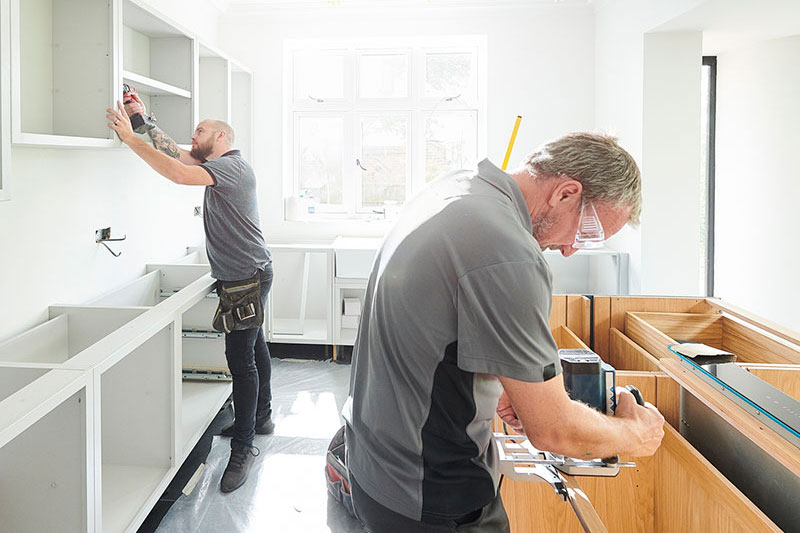
In general, there are three types of overlay for American-style cabinet doors — partial (or standard), full, and inset.
Tip! Check out our article on Kitchen Design Decision Making: Frameless vs Framed Cabinets to help decide which style is right for your project.
Partial overlays have the door mounted to the frame so that it only partially covers the frame. The amount the door will cover the frame in a partial overlay will vary, anywhere from 1/8” to upwards of 1-9/16”.
Full overlays fully cover the frame with doors that are larger than the frame, putting the frame virtually out of sight until the door is opened.
With inset overlays, the cabinet doors are set into the frame, so they don’t lay over the frame so much as they sit within it. Inset overlays can either be partially or fully set into the frame.
Frameless European Overlays
European-style cabinet doors have three similar categories of overlay, which use similar names — full, half, and inset overlays. The difference here is that, for this category of overlay, there’s not going to be a frame there, so the door will always be mounted directly to the side-wall.
European-style full overlays cover that cabinet side-wall entirely.
A half overlay will cover it partially — usually by 3/8”, rather than a 1/2”, though measurements vary from cabinet to cabinet. Be sure to figure this out before purchasing your cabinet hinges.
Inset overlays have the door mounted to the inside of the cabinet wall, so that the cabinet wall is visible.
Summing It Up
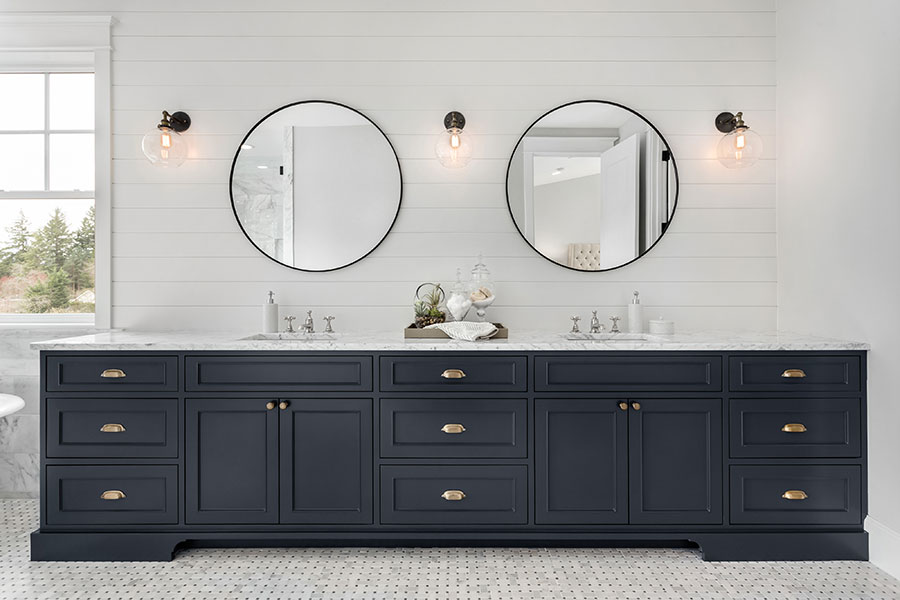
The different types of overlays all have their pros and cons — inset overlays, for example, can stick with temperature and humidity changes — but we can go over those another time.
What’s most important is that you talk to your client about these different overlays so you can determine what cabinet door hinge type you need and avoid any embarrassing mistakes. Every hinge type that we will go over from here has its own build for different overlays. It doesn’t matter what cabinet hinge style you go for if you pick one designed for an inset overlay while you’re working on a partial overlay project. As with all things, be sure to measure twice and cut once before making a final decision.
The Fun Part: Picking Your Cabinet Hinges
With all of that out of the way — your homework done, your cases in place (frame or no frame) — we can get into the nitty-gritty.
As we said before, and as you probably know in your experience, the market for any piece of hardware is enormous. The sheer amount of options for cabinet door hinges can be intimidating, but as long as you stick to what the project specs demand, it will be a piece of cake to figure out.
Visibility
The first big question to ask once everything else is figured out is if you want to see the cabinet door hinge or not, and if yes, how much of it do you want to see?
If the answer to that question is “not at all,” a concealed cabinet hinge is the best choice. This type of door hinge is also called (confusingly enough) a European hinge, but it can be installed on either American framed cabinets or frameless European cabinets.
Sometimes, you or your client may want more of a decorative touch — exposed cabinet hinges lend themselves best to people who want some ornamentation in their life. They come in several designs, every shape imaginable, and the pins of these hinges can have many different endings to pick from.
Some clients may want something in the middle. For these moments, a semi-concealed hinge is best, with only the knuckle of the cabinet hinge being visible when the door is closed.
Each one of these visibility categories has a wide range of selections to consider, which we will do here.
Choosing a Concealed Cabinet Hinge
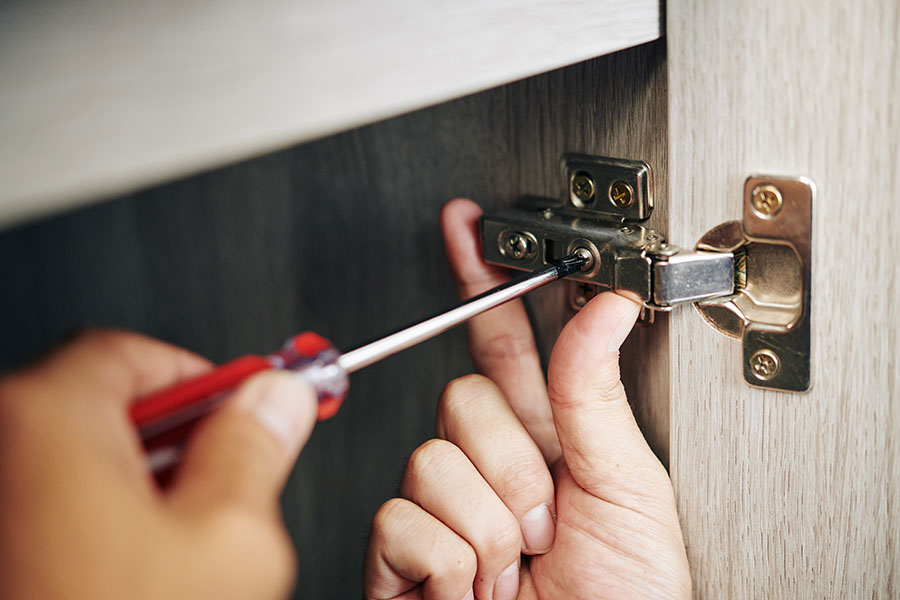
We’ve said it here before, but it’s worth saying again to drill it in — figure out your overlay and whether or not there’s a frame there first, because what type of concealed cabinet hinge you purchase and where you mount it depends on this.
One notable difference between good quality concealed hinges and exposed hinges is that these high quality concealed hinges are six way adjustable, and exposed hinges are not. The more your client will use their cabinet doors, the more the door movement can cause trouble for the hinge down the road, especially on inset cabinet doors. When you choose a concealed cabinet hinge, it’s much easier to adjust or correct this issue over time and with general wear and tear of the cabinet.
One of the more popular concealed cabinet hinges is the cup hinge, also (once again) called a European hinge. This cabinet door hinge is one of the more versatile cabinet hinges you’ll find, and are largely built for function rather than form. These cabinet hinges are mounted on either the sidewall or frame (depending on the cabinet type) alongside the door.
Also available among concealed kitchen cabinet hinges is the Soss hinge, which features more strength and support for your cabinet door. However, note that Soss hinges are only available for inset overlay cabinet doors or for connecting bi-fold doors like on a base corner Lazy Susan cabinet.
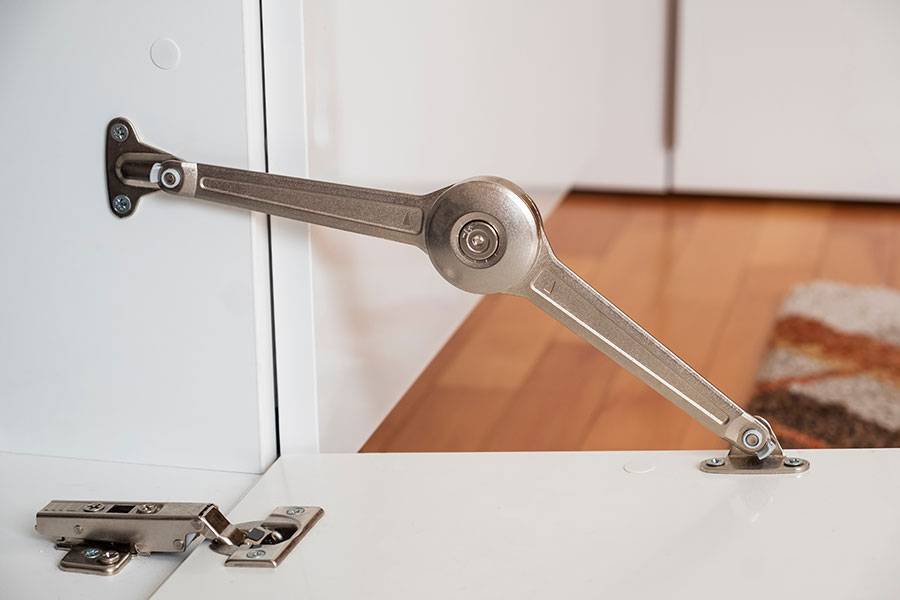
Alternatively, you can mount concealed cabinet hinges on the top and bottom of the cabinet case, using a pivot hinge. These are more difficult to install, and one wrong move can make your cabinet inoperable, so proceed with caution.
In fact, installing any of these types of cabinet door hinges requires a certain degree of skill — in most cases, you’re going to need to drill a mortise (or a small recess) into either the frame or cabinet wall (depending once again on the type of cabinet you’re dealing with) before installing it
Choosing an Exposed Cabinet Hinge
When picking an exposed cabinet door hinge, it’s important to consider the design and finish of the hinge itself, given that the person using the cabinets is going to be looking at them every time they reach for the salt.
Pin hinges are a traditional exposed cabinet door hinge that features two leaves linked with a pin. These make for easy installation, as they don’t require mortising and are available as semi-concealed.
Butt hinges are another variation of exposed cabinet hinges, although these can be semi-concealed as well. Note that butt hinges do require mortising, however.
Also available are T-hinges, named for the long, stemmed leaf attached to the door. With that said, these aren’t the most pretty cabinet door hinges to look at, being designed more for durability than anything else.
Choosing a Semi-Concealed Cabinet Hinge
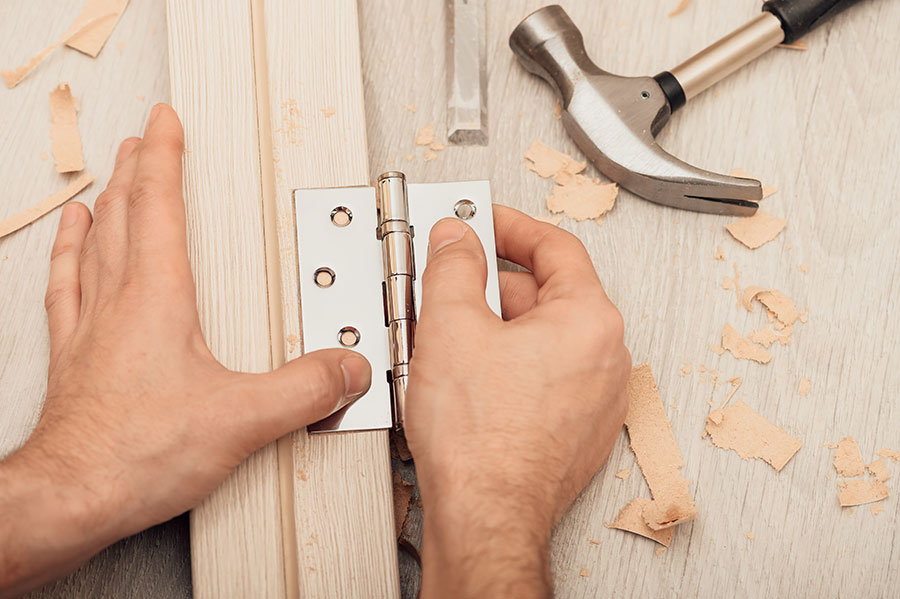
As mentioned above, butt hinges are a popular semi-concealed cabinet hinge, but require time-consuming mortising.
Alternatively, surface-mounted semi-concealed pin hinges are a viable option for beginner cabinetmakers who don’t want an exposed cabinet hinge. If you’re up to the task of mortising, however, pin hinges can be installed into a mortised cabinet for a cleaner look.
Also requiring a mortise is the knife hinge, which, similar to the pivot hinge, is installed at the top and bottom of the cabinet.
Final Thoughts
When considering any one of these options, it’s best to stick to fundamentals. In addition to what we’ve gone over, you should consider how far you want the doors to open, where the cabinet is being placed, and what sort of special features you or your client may want.
In fact, there are a boatload of additional options and special features available for these hinges. Growing in popularity, for example, are soft-close cabinet hinges, which slow the speed of the door as it closes. In the opposite direction are self-closing cabinet door hinges, which pull the door closed.
As long as you pay attention to the basics, like overlay and style (framed or frameless), and keep in good communication with your client, you’ll be able to figure out what kind of cabinet door hinge is right for the job.